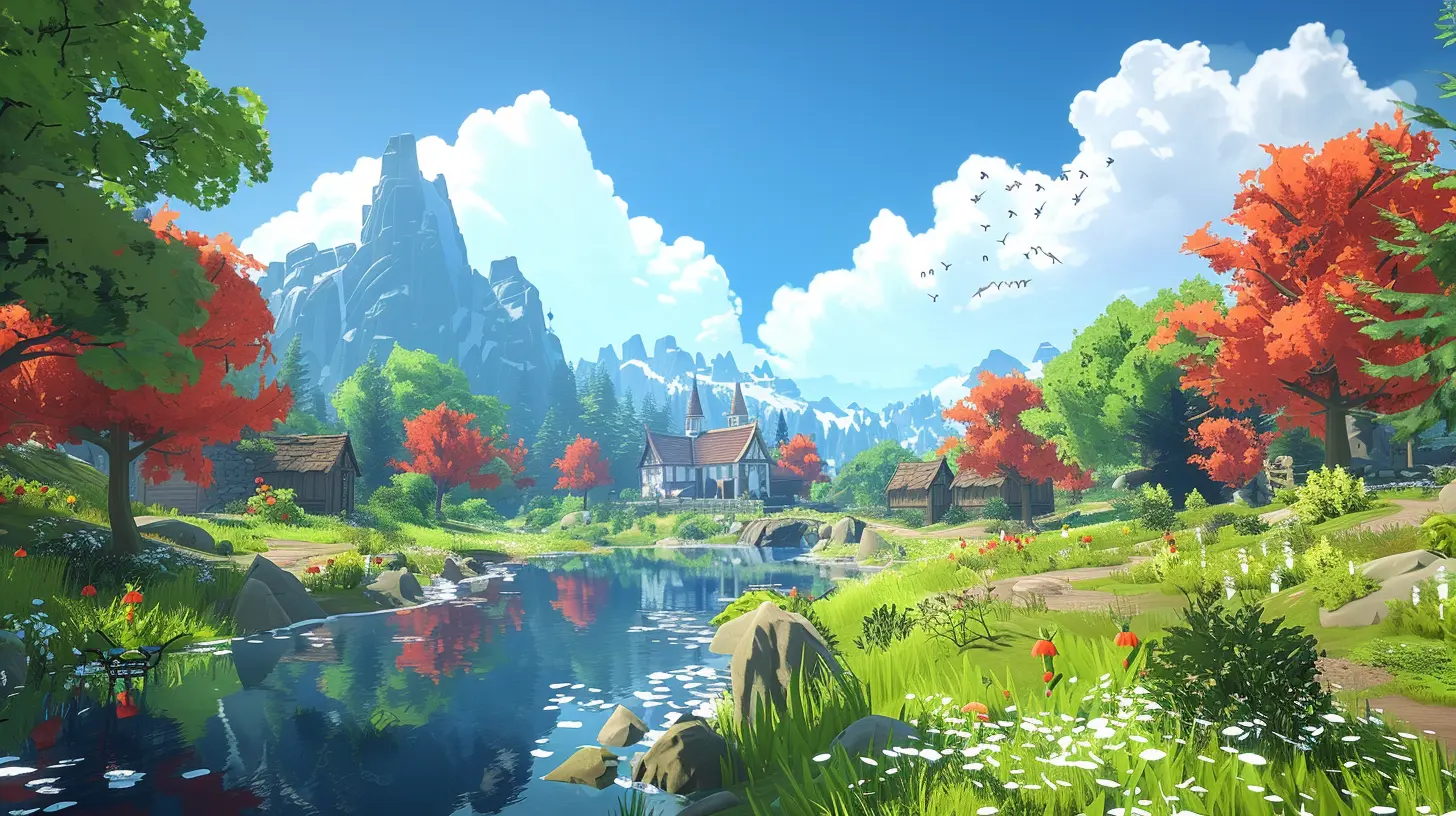Turning Your Game Idea into Reality with Unity
15 September 2025
So, you've got this killer game idea bouncing around in your head — maybe it's a sci-fi adventure through wormholes, or a quirky puzzle game featuring talking plants. Whatever it is, there’s just one question: how the heck do you go from idea to playable reality?
The good news? Unity’s got your back.
Unity is not just a tool; it’s a full-blown playground for game creators. It doesn’t matter if you’re a seasoned coder or someone who’s never written a single line of C
— if you’ve got the drive, Unity can help make that dream game real.
Let’s dive deep into the process and break down how you can turn your game idea into something you can actually play, share, and maybe even monetize. Ready? Let’s roll.
Why Choose Unity for Game Development?
Before we start hammering away at game mechanics and code, let’s get one thing straight: why Unity?Simple. It's powerful, beginner-friendly, and widely used in the gaming industry across PCs, consoles, mobile, and even VR. Ever played Hollow Knight, Monument Valley 2, or Among Us? Yep, those were built with Unity. You're in good company.
Here’s Why Unity Rocks:
- Cross-platform support: Build once, run anywhere (almost). iOS, Android, PC, web — Unity’s got them all.- Free to get started: Indie devs love this. If you’re not making big bucks (yet), Unity’s free version gives you tons of bang for zero bucks.
- Massive community: Stuck on a problem? There’s a tutorial, forum thread, or YouTube walkthrough waiting to help.
- Asset Store: Don’t reinvent the wheel. Buy (or grab free) assets like textures, sounds, animations, and full-on character packs.

Step 1: Start with the Core Idea
Alright, first things first — what’s your game about?This is where most devs either fly or flop. Don’t rush this. If your core idea is weak, the rest won’t matter. So, ask yourself:
- What’s the hook?
- Who are the characters?
- What’s the player’s goal?
- Why would someone want to play it?
Be bold and original. And remember, it doesn’t need to be massive. Some of the most viral indie games started super simple — think “Flappy Bird” levels of simple.
Pro Tip: Write It Down
Sketch out the concept. Create a one-pager that explains your game in plain English. This becomes your lighthouse when things get messy (and they will, trust me).
Step 2: Learn the Unity Interface Without Drowning
Unity can look intimidating at first. Panels everywhere, buttons you don’t recognize — the whole thing feels like a cockpit.But don't worry, you don’t need to master everything on day one.
Key Areas to Know:
- Scene View: This is your playground. You build your worlds here.- Game View: What the player sees. Click “Play” and test your game in this window.
- Hierarchy: Shows all game objects in your scene.
- Inspector: Adjust properties of selected objects.
- Project Window: Holds your assets (art, scripts, audio, etc.).
- Console: Shows errors and debug info (your best friend and worst enemy).
Play around. Break stuff. It’s okay. That’s how you learn.
Step 3: Build a Prototype — Fast
Here’s the thing: ideas are cheap. Execution? That’s the real test.Build a “minimum viable game” — a basic version that proves your concept works. No fancy graphics. No polish. Just the raw gameplay loop.
If your idea isn't fun at this stage, no amount of glitter will fix it.
Example:
If you're making a platformer, create a level where your character can jump, land, and move around. That’s it. Keep it tight and functional.Use placeholder assets. Unity even has built-in shapes (like cubes and spheres) you can use to stand in for characters or obstacles.
Don’t fall into the perfection trap — rough and ready beats pretty and never-finished.
Step 4: Add Scripting Magic
This is where your game comes alive. Unity uses C#, but don’t freak out. The basics are easier than you think.Want your character to move? You’ll write a script for that. Want the enemy to chase the player? Script. Want doors to open, coins to collect, health bars to update? Yep, all scripts.
Here’s a super-simplified example:
csharp
public class PlayerMovement : MonoBehaviour
{
public float speed = 5f; void Update()
{
float move = Input.GetAxis("Horizontal");
transform.Translate(Vector3.right move speed * Time.deltaTime);
}
}
Boom. That’s your player moving side to side with arrow keys or A/D.
Don’t know where to start with scripting? Unity’s Learn platform and YouTube tutorials are absolute goldmines.
Step 5: Polish the Gameplay
Once the prototype feels good, it’s time to start layering in the fun stuff.- Graphics and Animations: Start replacing placeholders with real art.
- Sound Effects and Music: Sound makes everything better, period.
- User Interface (UI): Add menus, health bars, scoreboards, etc.
- Level Design: Create more levels, add complexity, increase difficulty.
This is where you breathe life into the skeleton.
Important: Every time you add something, playtest it. Get others to play it too. Their feedback is pure gold — even if it stings.
Step 6: Optimize and Squash Those Bugs
Now that your game’s taking shape, it’s time to tidy up. Unity makes optimization fairly easy, but don’t get lazy.- Compress assets: Smaller file sizes = faster load times.
- Test on multiple platforms: What runs great on your PC might crawl on an old smartphone.
- Fix bugs: That one weird glitch that crashes the game? Yeah, fix it.
Use Unity’s Profiler to track performance. Learn about garbage collection, draw calls, and how to keep your frame rate silky smooth.
Step 7: Build and Publish
You’ve reached the final stretch. Time to show the world what you’ve built.Publish Options:
- PC/Mac/Linux – Easy to build and distribute on Steam or itch.io.- Mobile (iOS/Android) – Requires extra setup, especially for iOS (Apple’s Xcode and dev account).
- WebGL – Run your game in a browser. Great for quick demos.
- Consoles (PS, Xbox, Switch) – Possible, but you’ll need dev approval and licensing.
Follow Unity’s build guides. They walk you through packaging your game for each platform.
Step 8: Get It Out There
Publishing isn’t the end — it’s just the beginning.Promote your game like crazy. Post on Reddit, Twitter (X?), Instagram, TikTok — wherever your audience hangs out. Create a devlog. Build a community. Release trailers, teasers, and behind-the-scenes clips.
Join game jams, submit to festivals, reach out to streamers and YouTubers. Make noise.
And here's a big truth: your first game probably won’t be a runaway hit. That’s okay. Each project is a stepping stone to something better. Keep creating, keep learning, and keep leveling up — just like in your favorite RPG.
Bonus: Tips You Won’t Find in Tutorials
- Scope small, dream big: It’s better to finish a tiny game than get overwhelmed by a massive one.- Reuse assets smartly: No shame in using the Unity Asset Store to speed up development.
- Use version control: Git is your safety net. Mess up major code? Roll it back.
- Document everything: Future-you will thank current-you for those notes.
- Take breaks: Burnout is real. Step away when needed. Creativity thrives when you’re rested.
Final Thoughts: You Got This
Turning your game idea into reality isn’t some mythical quest only wizards can do. It’s a process — sometimes messy, often challenging, but always rewarding.Unity gives you the tools. The rest is up to you.
So grab your coffee (or energy drink of choice), fire up Unity, and start building. Because the best time to make your dream game isn’t tomorrow — it’s right freaking now.
Let’s go turn that idea into something epic.
all images in this post were generated using AI tools
Category:
Unity GamesAuthor:

Tayla Warner
Discussion
rate this article
1 comments
Miriam Lawson
This article is a fantastic starting point for aspiring game developers! Unity's flexibility and user-friendly interface make it accessible for bringing your game ideas to life. Don't forget to leverage online resources and community forums for support and inspiration throughout your journey!
September 23, 2025 at 3:58 AM

Tayla Warner
Thank you for your insightful comment! I'm glad you found the article helpful. Unity truly is a fantastic tool for aspiring developers, and tapping into online resources can make a big difference. Happy developing!


